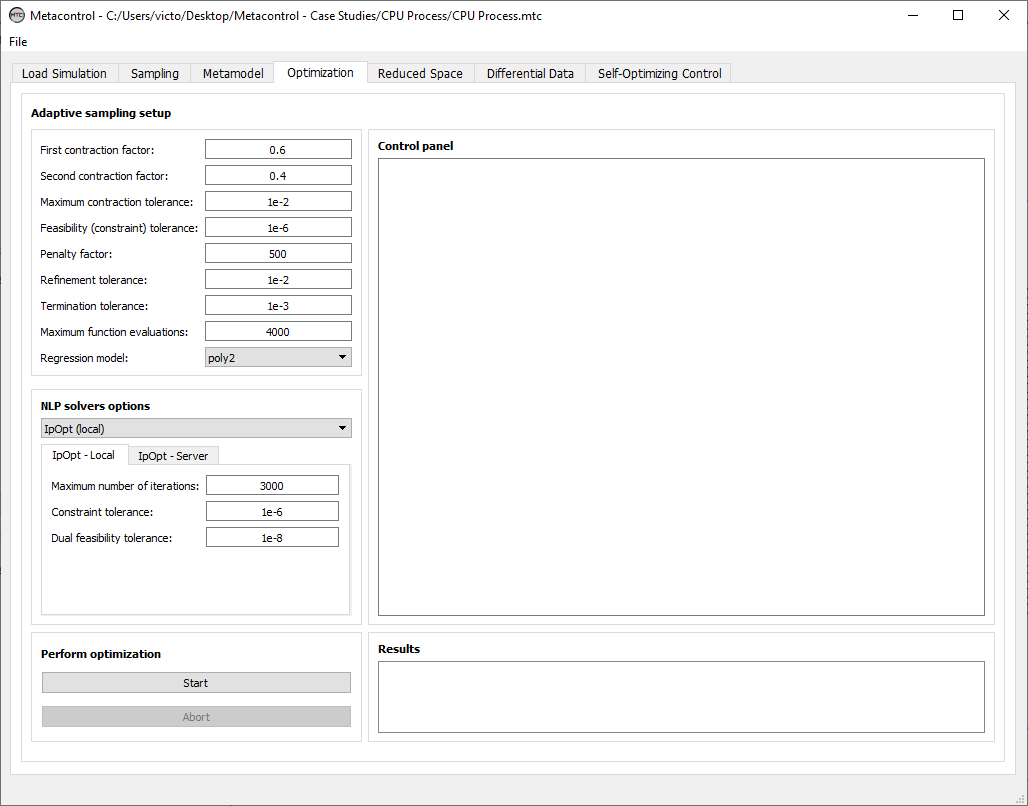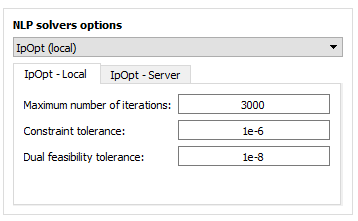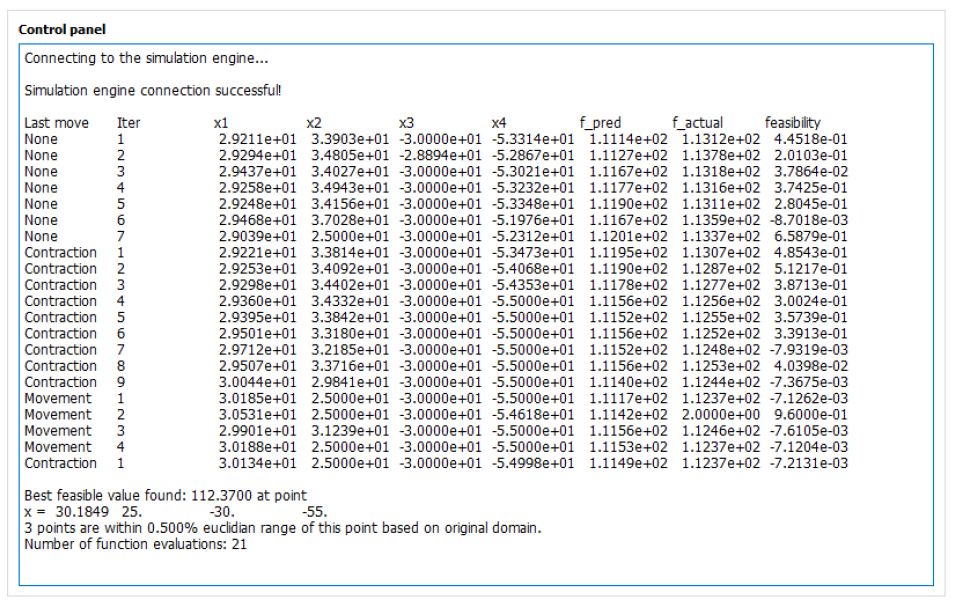The “Optimization” tab¶
This tab allows you to optimize the metamodel objective function, subject to the constraints that you have created (also metamodels). In addition, the bounds of the Manipulated Variables (MVs) that you defined at the “Sampling” tab are automatically incorporated to the optimization problem as box constraints.
You can also:
Modify the NLP (IpOpt) solver parameters
Modifiy the infill criteria algorithm parameters, implemented in Metacontrol to refine your kriging response
Inspect each iteration of the infill criteria algorithm in real time
At the end of the run, see your results in a concise panel.
Here is an overview of this tab:

Fig. 42 Metacontrol “Optimization” tab.¶
There are five main panels on this tab:
Adaptive sampling setup panel
NLP solvers options panel
Perform optimization panel
Control panel
Results panel
Adaptive sampling setup panel¶
On this panel you will setup the main parameters for the Adaptive Sampling (infill criteria) algorithm.

Fig. 43 Configuring adaptive sampling algorithm.¶
You can setup values for:
First and Second contraction factors
Maximum contraction tolerance
Feasibility constraint tolerance
Penalty factor for the objective function
Refinement tolerance
Termination tolerance
Maximum function evaluations
The kriging regression model used in the adaptive sampling algorithm
Important
For a explanation on how each parameters affects the optimization run, refer to our theoretical backgrounds section.
NLP solvers options panel¶
You can select the NLP solver and configuring its parameters at this section. Currently, we support IpOpt inside Metacontrol natively.

Fig. 44 Configuring NLP Solvers Parameters.¶
Perform optimization panel¶
At this panel you can start your optimization run, or abort it at any moment.

Fig. 45 Start/abort optimization run.¶
Performing an optimization run¶
After configuring the adpative sampling and NLP parameters, you can click on “Start” under the “Perform optimization” panel in order to begin the metamodel optimization. You can see at the Control panel the iterations in real time, and each step performed by the algorithm.
Control panel¶
This is how the control panel looks like during an optimization run in Metacontrol:

Fig. 46 Control panel output.¶
The control panel shows (being updated in real time) the operations performed by the adaptive sampling algorithm, the decision variables values (MVs) at each iteration, the actual and predicted objective function values, and the largest infeasiblity (constraint) violation for that iteration. At the end of the optimization run, Metacontrol will inform you how many points are within the trust-region.
Important
To understand how the algorithm works, refer to our theoretical backgrounds section.
Results panel¶
The results panel gives a summary of the results of your optimization problem, such as
Final decision variables values
Constraint expressions values
Objective function value

Fig. 47 Results panel , a summary of your optimization run.¶
Interpreting constraints results¶
As stated before at the previous section, the constraints are written in Metacontrol in the form:
Therefore, if a constraint has, after the optimization run, a negative value, it indicates that this constraint is inactive. On the other hand, constraints values equals 0 indicate that for the problem created, this constraint is active. This information is important because Active-Constraint Control is a mandatory step in Self-Optimizing control methodology.
In the example above, all nonlinear constraints were inactive. Three decision variables (MVs), on the other hand, were active at their lower bounds (mcct, f1t and f2t).